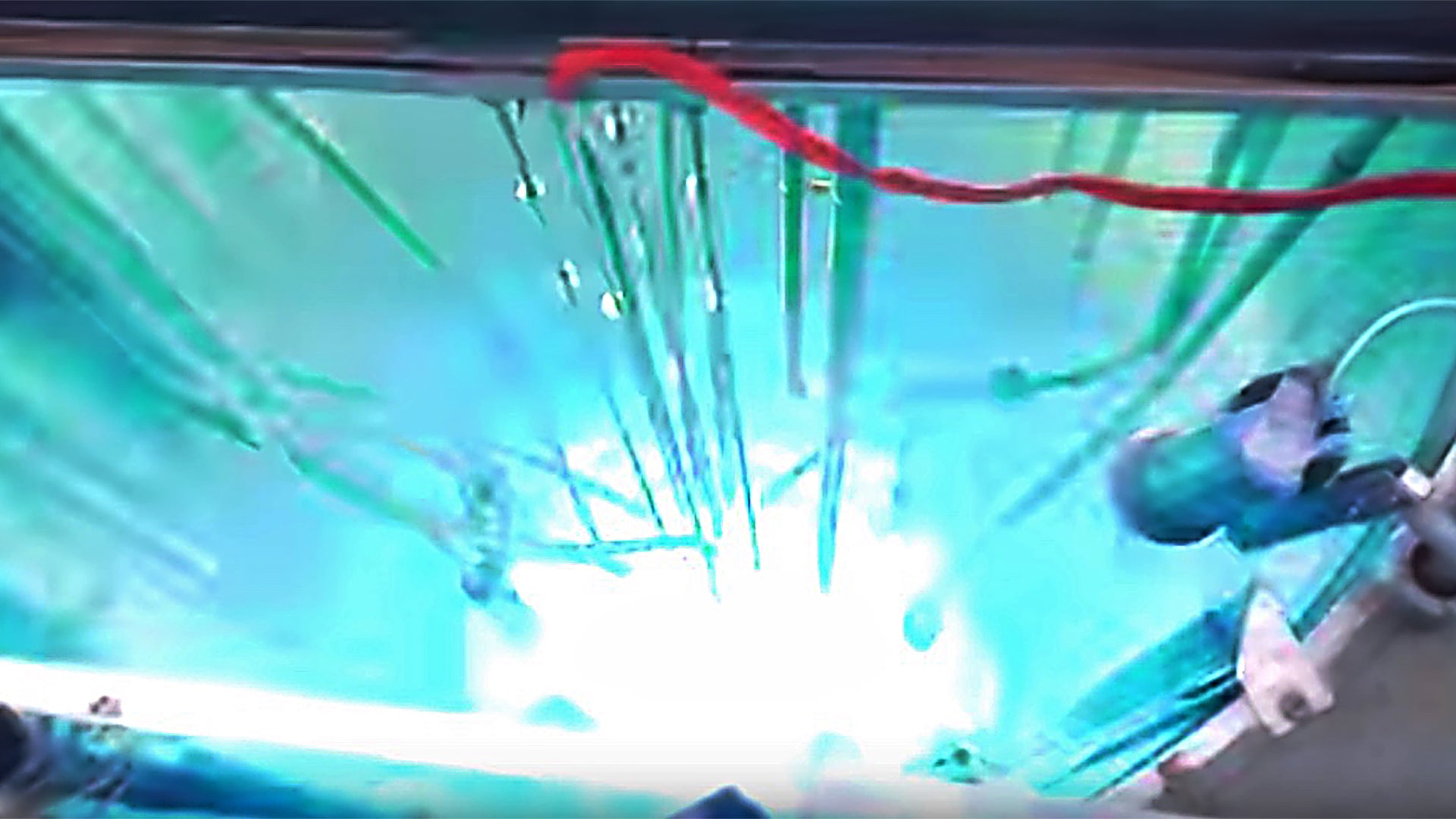The Twitterverse is a flea market of information. Most of it is junk, but there are some real gems to be found. One such post came through my feed this afternoon. It showed a nuclear research reactor giving off a bright blue pulse of light as it fired up. After the initial pulse, the reactor continued to glow an iridescent blue. The clip looked right out of a science-fiction blockbuster. I noted as much when I retweeted it.
Thankfully, I don’t have to explain this phenomenon, the IAEA posted a little video about Cherenkov light and how it is helpful to multiple scientific fields of study:
Here’s another video that’s worth watching to give you a little more context:

Symmetrymagazine.org also gives a good basic explanation of the Cherenkov light, also known as Cherenkov radiation:
“Cherenkov light appears when a charged particle travels through matter faster than light can. This effect is the optical equivalent of a sonic boom, which occurs, for example, when a jet travels faster than the speed of sound.
But how can a particle go faster than light without violating the laws of physics? The speed of light in a vacuum is the ultimate speed limit: 300,000,000 meters per second. It’s thought that nothing can travel faster.
However, light slows down when it goes through water, glass and other transparent materials—in some cases by more than 25 percent. Hence a particle can slip through material faster than light does, while at the same time staying below the speed of light in a vacuum.
When this happens, a particle emits bluish Cherenkov light, which spreads out behind it in a hollow cone that is shaped like the cone of a sonic boom. This light gives the water surrounding a nuclear reactor core its distinctive blue glow.
Scientists build telescopes to gather Cherenkov light emitted by cosmic-ray and gamma-ray showers in the Earth’s atmosphere. Neutrino physicists embed hundreds of light-sensitive detectors in large volumes of water and ice to record Cherenkov light from muons and electrons, which emerge when neutrinos crash into atoms. The Cherenkov light recorded with such devices helps scientists identify particles and determine their energies.”
The world’s fascination and fear of nuclear applications have entered something of a renaissance recently due to what many would describe as the new Cold War between Russia and the United States, and both countries’ subsequent focus on updating and expanding their nuclear arsenals. Yet what has really elevated this scientific realm within the public’s collective consciousness is the Chernobyl mini-series that premiered last May.
Although not every element of the incredibly well-produced show was perfectly accurate, it really seems to have brought concerns surrounding harnessing the atom to a whole new level. Some would call these concerns unfounded, while others say they are anything but. Regardless, this revived interest in all things nuclear manifests itself in many ways, and especially in regards to interest in reports on nuclear accidents, both new and old, as well as interest in more positive articles on what could potentially be an exciting future where nuclear energy production is far safer, cleaner and cheaper than it is today.
For those of us who are not nuclear physicists, nuclear radiation and its somewhat surreal effects and byproducts can seem almost like magic. Yet sometimes reality has more in common with sci-fi than one would expect, which seems to be the case with very eerie yet beautiful Cherenkov light.
Contact the author: Tyler@thedrive.com
